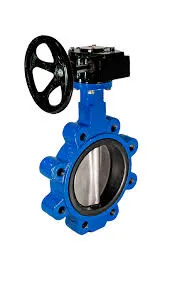lis . 05, 2024 02:51 Back to list
non rising stem gate valve
Non-Rising Stem Gate Valve An Overview
A non-rising stem gate valve is a critical component in many industrial and municipal applications, particularly in systems that require reliable flow control with minimal space constraints. This type of valve stands out due to its design, which prevents the stem from extending outward when the valve is opened or closed. Instead, the stem remains fixed, moving up and down within the valve body. This feature makes non-rising stem gate valves particularly suitable for applications where vertical space is limited, such as underground facilities and tight installations.
Design and Functionality
The non-rising stem gate valve's core functionality lies in its ability to provide a straight-through flow path. This design minimizes pressure losses and turbulence when the valve is fully open, ensuring efficient operation in fluid transport systems. When the valve is closed, the gate element, usually made of robust materials like cast iron or stainless steel, creates a tight seal against the valve seat, preventing fluid leakage.
The operational mechanism involves a threaded stem that connects to the gate. When the handwheel or actuator is turned, the stem rotates and moves the gate up or down into the flow path. Unlike rising stem designs, where the stem's position indicates the valve's status, a non-rising stem valve requires additional indicators or mechanisms to inform operators whether the valve is open or closed.
Advantages
non rising stem gate valve

One of the primary advantages of non-rising stem gate valves is their compact design. This is particularly important in urban areas where space is at a premium. Moreover, because the stem does not extend, the valve can be used in locations where rising stems would pose an obstruction or where overhead clearance is limited.
Another benefit is the reduced risk of damage from external factors. In environments where valves are exposed to harsh conditions, such as extreme weather or mechanical impact, the fixed stem design mitigates the risk of damage. This durability contributes to a longer lifespan for the valve, reducing the need for frequent replacements and maintenance.
Applications
Non-rising stem gate valves are commonly used across various sectors, including water treatment plants, sewage systems, and fire protection systems. Additionally, they play a vital role in oil and gas pipeline applications, where their reliable sealing capabilities are essential for maintaining system integrity. These valves are also utilized in HVAC systems and in chemical processing where space efficiency is paramount.
Conclusion
In summary, non-rising stem gate valves represent a practical solution for applications requiring reliable flow control in confined spaces. Their unique design enhances durability while minimizing the physical footprint necessary for installation. As industries continue to evolve and prioritize efficiency and space conservation, the significance of non-rising stem gate valves in fluid control systems will only increase. Understanding their design, advantages, and applications can aid engineers and operators in selecting the right valve for their specific needs, ultimately leading to improved system performance and longevity. As we move toward more integrated and technologically advanced systems, the contribution of such valves to reliable and efficient fluid transport will remain indispensable.
Share
-
Reliable Wafer Type Butterfly Valves for Every IndustryNewsJul.25,2025
-
Reliable Flow Control Begins with the Right Ball Check ValveNewsJul.25,2025
-
Precision Flow Control Starts with Quality ValvesNewsJul.25,2025
-
Industrial Flow Control ReliabilityNewsJul.25,2025
-
Engineered for Efficiency Gate Valves That Power Industrial PerformanceNewsJul.25,2025
-
Empowering Infrastructure Through Quality ManufacturingNewsJul.25,2025